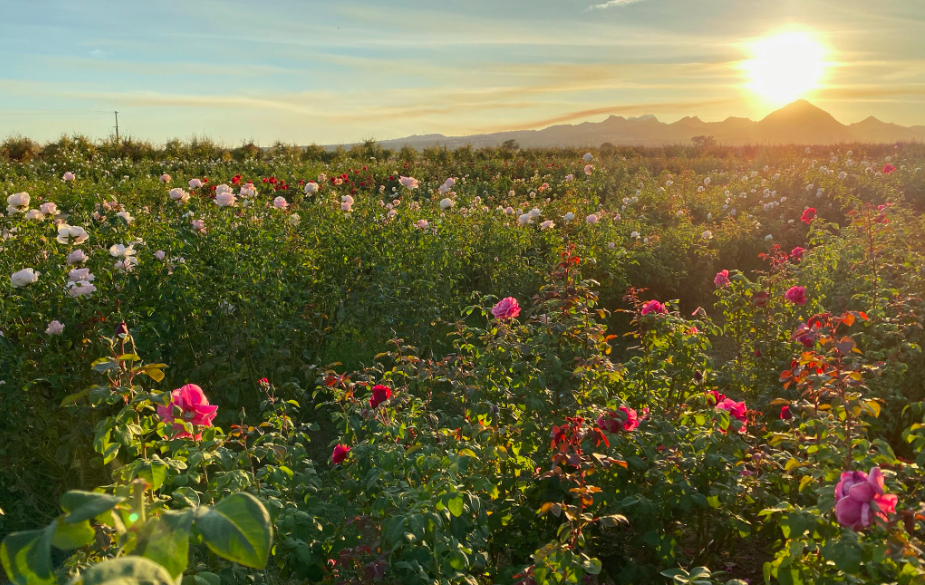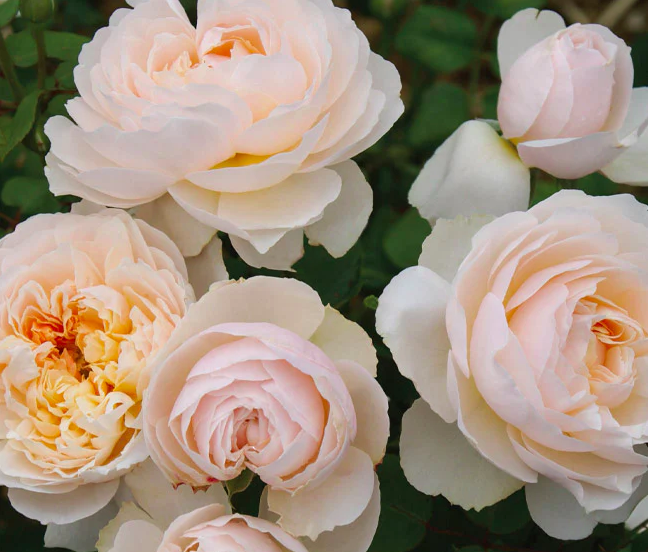All About Roses
I am not what is technically referred to as a “rosarian”. Rosarians are people who have spent years studying and testing to get certification from an organization such as the American Rose Society. I am more of what you might call an “excessively enthusiastic grower” — now turned professional flower farmer.
When I was little and my parents were adding to our garden, all I would ever ask for was more roses. We planted boxwoods and azaleas in abundance for my mother’s vision of a partial shade English style garden. Annual impatiens were the bane of my summer chore-filled existence. Planting and watering and replanting when they inevitably died on repeat from Mother’s Day through August. But my heart lay on the south side of our house – with the strip of colorful shrubs bordering our retaining wall. I loved how they looked and smelled. I even loved that they were beautiful and delicate and a little bit dangerous with their spikey thorn-covered stems. There were roses in shades of hot pink and bright orange with almost neon tones and the most delicious floral scents.

My favorites were the richly colored sunset or antique toned roses- with golden yellow petals tipped in rich rusty hues. Fast forward to the first shrub I bought for our new home in Cheverly which was a David Austin classic: Lady of Shalott. I first bought it for the name – a reference to one of my favorite all time stories and my deeply dramatic and charming childhood heroine– Anne of Green Gables. But I’ve kept he around because of sweet cupped flower form, apricot hued petals and spicy almost tea leaf scent. To be fair she is not my favorite for commercial cut flower use. Her stems can be a bit spindly and the flower heads can droop rather than hold up straight. But I will always see her beauty and keep her around, if only for sentimental reasons.


When we first started formulating the growing plan for QBR I knew I wanted to grow roses. I knew of only a handful of farms that grew them in our area. I also knew from a number of local event florists in the area that garden style roses were definitely in demand. However, not a lot is known about how to grow them successfully as a cut flower in our region.

Most growers who specialize in garden roses such as Grace Rose Farm and Menagerie Farm and Flower are located in California – naturally with some of the best terroir for rose growing. They have long growing seasons with generally consistent temperatures during the growing season. While roses do not favor our high humidity and temperatures, our longer growing seasons do allow for repeat blooming roses to have 2 main flushes that generally align with spring and fall wedding seasons in our area.
Beyond figuring out the blooming time of roses, there are also numerous considerations when using them for the cut flower purpose. Many roses that are listed as good for cuts include thin or spindly stem with large flower heads that cannot be supported on the stems alone. While the flowers are gorgeous (including the aforementioned Lady of Shalott) they are not always as sturdy an option for event design where florists are typically looking for long, straight stems that can be manhandled a little bit when added to bouquets, centerpieces and installations like arbors.


The flower heads themselves also need to be sturdy and harvested at the correct time to avoid “blowing out” or overbloming/wilting before the end of an event. The advantage with flowers for event use is they have a short window in which they need to be their best. The other side of that same argument though, is that the flowers also need to be able to withstand temperature changes, outdoor direct sunlight or indoor spotlights and have to be sturdy enough to be designed with over the course of a few days. If they are picked too early – they will not fully open. If they are picked too late they may blow out and shatter (when petals fall from the flower) before the end of the event. The flower also need to be harvested quickly into fresh water and then be chilled down in a cooler within a few hours of harvesting to allow for the longest vase life possible.



Fellow garden friends Laura Leader of Fox Hill Garden and Jodi Baier from Farmhouse 1851 advised me on the specific roses they preferred to grow and thus began the constant research into rose cultivars. After months of debating we finally settled on 5 new sets of plants – 20 of 3 types – 10 each of 2 sort of “curve ball” options for florists. (Richly colored flowers in burgundy or purple – not always the most preferred shades for wedding focused florists.)


The quantities here are important to note if you are looking to grow for commercial use. If you are a home gardener or a collector, typically you will purchase one or two of the same type rose. When growing for sale to florists however, you need a larger number of blooms of the same type of rose, which therefore means purchasing multiple plants of the same cultivar. Of course after all my research, only time and observation will tell which cultivars are best for this purpose. (For further in depth information about growing roses I highly recommend Felicia Alvarez’s book Growing Wonder.)

And so, in we dug our beds – 5 feet wide by 100 feet long – planning for two rows in each bed, alternating on each side with 2 feet spacing between each plant. This amount of space should allow for plenty of room to grow while allowing us to prune and weed between the plants. Until the time we have a well dug and water access, our bare root babes will be hand watered with a watering can. (This subject is for an entire separate post.) It is with high hopes that we can allow these plants to establish over the spring and finally be able to harvest a few stems by fall.
For now, I will be looking forward to cutting a few Lady of Shalott in a month or so – once my original plant blooms in our back yard – still confined to its grow bag home until we find a new permanent home in the landscape at The Ridge.

April 2, 2022
Leave a Comment
Leave a Reply
LET'S CONNECT
Let’s work together to create something special.
Comments